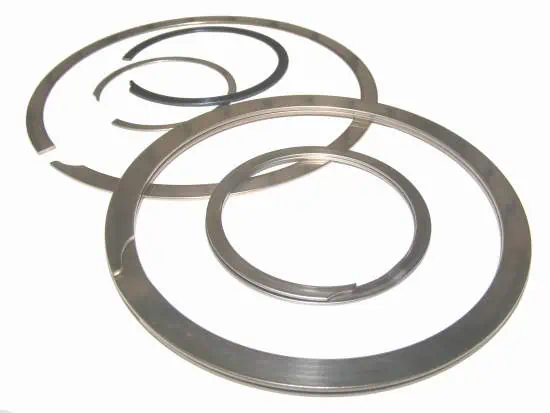Retaining rings, also known as snap rings, are small circular fasteners used to securely hold components onto shafts or in housings. They are commonly used in industrial applications, such as automotive, aerospace, and manufacturing industries.
Over the years, innovations in retaining rings have had a significant impact on the supply chain, improving efficiency, reducing costs, and increasing reliability.
In this blog post, we will explore some of the latest innovations in retaining rings and their impact on the supply chain.
Increased Precision and Performance
One of the most significant innovations in retaining rings has been the use of advanced materials and manufacturing techniques to increase precision and performance. Retaining rings are often used in high-speed applications, where accuracy and reliability are critical.
New materials and manufacturing techniques, such as CNC machining and 3D printing, have enabled the production of snap rings with tighter tolerances and higher strength-to-weight ratios. This means that retaining rings can now be designed to withstand higher loads and operate more smoothly, leading to increased efficiency and reduced downtime.
New Materials and Coatings
In addition to precision manufacturing techniques, advances in materials science have led to the development of new materials and coatings for retaining rings.
For example, some snap rings are now made from high-performance alloys, such as titanium, that offer superior strength and durability. Others are coated with specialized materials, such as ceramic or diamond-like carbon, to improve wear resistance and reduce friction.
These new materials and coatings can extend the life and reduce the need for frequent replacements, resulting in significant cost savings for manufacturers.
To explore how these innovations can be further enhanced and optimized, view finishing services here. These finishing services can play a crucial role in fine-tuning the performance and durability of retaining rings to meet your specific industrial needs.
Customized Solutions
Another innovation in retaining rings has been the ability to offer customized solutions for specific applications. In the past, manufacturers were limited to standard sizes and design, which often required them to make compromises in their designs.
However, with advances in computer-aided design (CAD) and other software tools, manufacturers can now create custom retaining rings that are tailored to their specific needs. This allows for greater flexibility in the design process and can result in more efficient and cost-effective solutions.
Streamlined Supply Chain
The innovations in retaining rings have also impacted the supply chain, resulting in streamlined processes and improved efficiency. With the ability to produce retaining rings to tighter tolerances and with customized designs, manufacturers can now reduce their inventory levels and order quantities.
This means that they can respond more quickly to changes in demand and reduce the amount of capital tied up in inventory. Additionally, with the increased precision and performance of modern retaining rings, manufacturers can reduce the need for inspection and quality control, further streamlining the supply chain.
Reduced Environmental Impact
Finally, innovations in retaining rings have also had a positive impact on the environment. With the ability to produce stronger, more durable product, manufacturers can reduce the amount of material needed for each component.
This not only reduces costs but also results in less waste and a lower environmental impact. Additionally, some new materials used, such as biodegradable plastics, can further reduce the environmental impact of manufacturing and disposal.
Conclusion
In conclusion, innovations in retaining rings have had a significant impact on the supply chain, improving efficiency, reducing costs, and increasing reliability.
New materials, precision manufacturing techniques, customized solutions, and streamlined processes have all contributed to the development of stronger, more durable retaining rings that can be tailored to specific applications.
As the demand for precision components continues to grow, it is likely that we will see further innovations in the design and production of retaining rings that will further improve the efficiency and sustainability of industrial manufacturing.

